
On 24 April 1990 the Hubble Space Telescope was launched by the Space Shuttle Discovery.

And in the 28 years since that launch, the Hubble Space Telescope has helped us see further, discover new things, led us to scientific breakthroughs and bring back amazing images from space.
The telescope was named after Edwin Hubble, who discovered that the universe is expanding.
Hubble Space Telescope was built by NASA with contributions from ESA.
The whole project was budgeted at US$400 million. But at the time of the launch, that amount had reached US$4.7 billion. Twenty years after its launch, its cumulative costs were estimated to be around US$10 billion.
Today the spacecraft is operated by the Goddard Space Flight Center and the Space Telescope Science Institute takes care of the operations what to look and and processes the data afterwards.
Hubble Space Telescope Specs
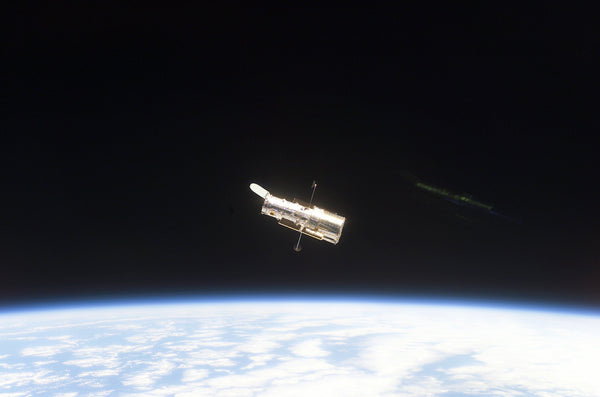
The Hubble Space Telescope in orbit - Image credit: NASA/ESA
Hubble has a 2.4 meter (7.9 ft) mirror and is able to observer in near ultraviolet, visible and near infrared spectra.
Being outside of the distortion of Earth's atmosphere, allows Hubble to take high resolution images with very little background light. That allows it to see a lot more than Earth based telescopes.
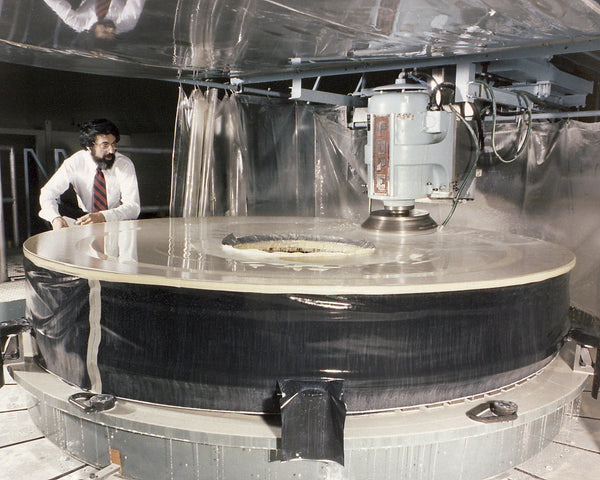
Hubble Space Telescope Primary Mirror being ground at Perkin-Elmer
The almost 8 foot diameter primary mirror was made by Perkin-Elmer. After grinding and polishing, the glass surface was coated with a reflective layer of aluminium and a protective layer of magnesium fluoride. This helps Hubble withstand the extreme conditions that space throws at it.
Hubble Space Telescope Servicing Missions
Hubble Space Telescope was the first telescope designed to be serviced in space.
And in the years since launch, there have been 5 missions to repair, service or upgrade the telescope.
All missions were carried out by Space Shuttles between 1993 and 2009.
These servicing missions were pretty tricky. The Space Shuttle had to interecept the Hubble Space Telescope in orbit and retrieve it with the Shuttle's mechanical arm. Then the work begon with thethered spacewalks in the days after.
After servicing, the telescope was put back into an orbit a little higher than before, to compensate for the orbital decay.
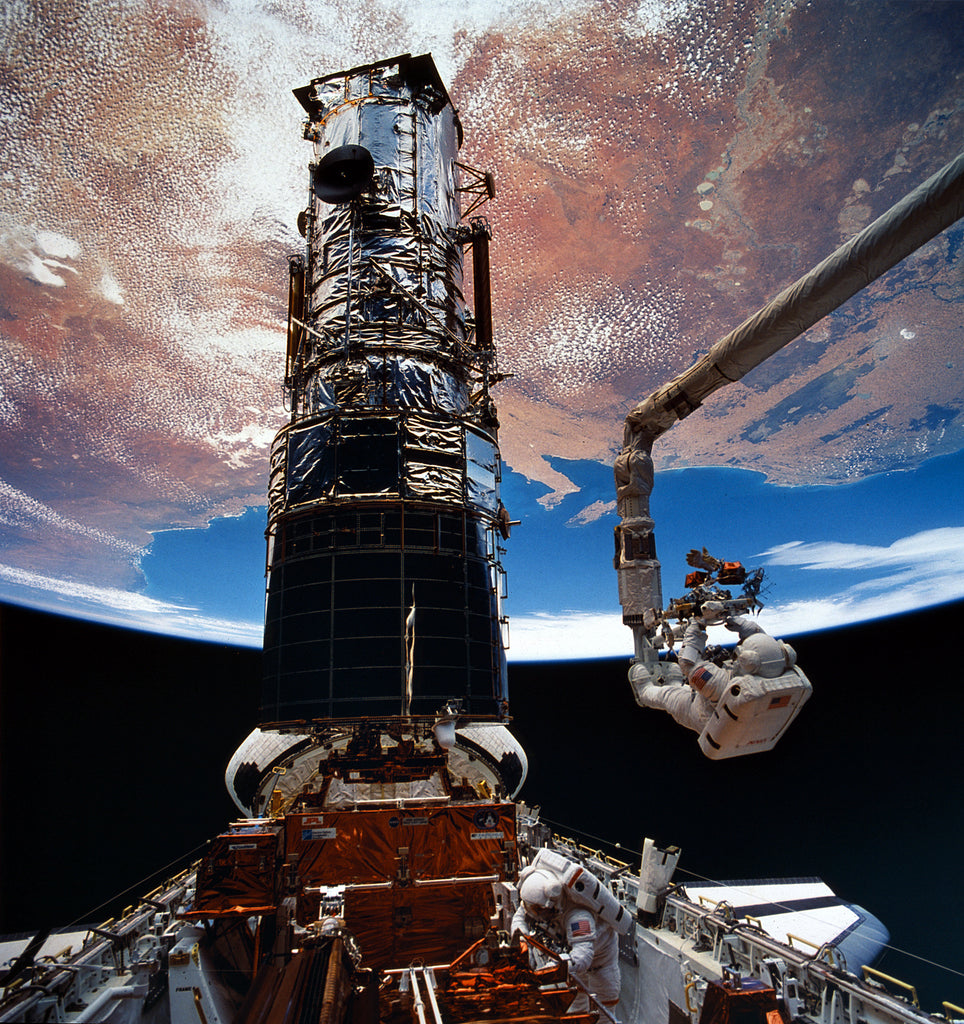
NASA astronauts Hoffman and Musgrave during the first servicing mission - Image credit: NASA
To be able to effectively perform maintenance and upgrades on the HST, astronauts trained in a tank before:


Work on the Hubble Space Telescope from the Discovery's payload bay during servicing mission 2 in 1997 - Image credit: NASA
 Servicing mission 3A of the Hubble Space Telescope in 1999 - Image credit: NASA
Servicing mission 3A of the Hubble Space Telescope in 1999 - Image credit: NASA
Interesting little fact: when the Hubble Space Telescope launched, all of its data were stored on tape recorders. During servicing mission 2 and 3A, these were replaced by solid state drive.

Astronaut Michael Good working on the HST during STS-125, the final servicing mission to the telescope in 2009 - Image credit: NASA
With these final repairs and upgrades, the telescope could last till 2030-2040. Its successor, the James Webb Space Telescope, is scheduled to be launched in 2020.
Most Memorable Hubble Space Telescope Discoveries
The Hubble Space Telescope has led to many scientific breakthroughs, including a Noble prize.
Most importantly, it helped to get a more exact understanding of the actual rate at which the universe is expanding, which is also related to its age.
Before the HST, scientists estimated the Universe's age to be between 10 and 10 billions years. The Hubble put that number at 13.7 billion years.
The Hubble Space Telescope also helped to observe the prevalence of black holes in other star clusters, indicating that they are much more common than originally was assumed.
It also played a star role in observing the collision of Comet Shoemaker-Levy 9 with Jupiter in 1994.
Because of its and frequent servicing, the Hubble Space Telescope also helped aerospace engineers study the effects from objects in low Earth orbit, like for example the impact of radiation on electronics.
And besides all these leaps, the super high resolution camera on the Hubble has brought back some pretty breathtaking images:

A new look at the Lagoon Nebula released for Hubble's 28th year in space anniversary in 2018 - Image credit
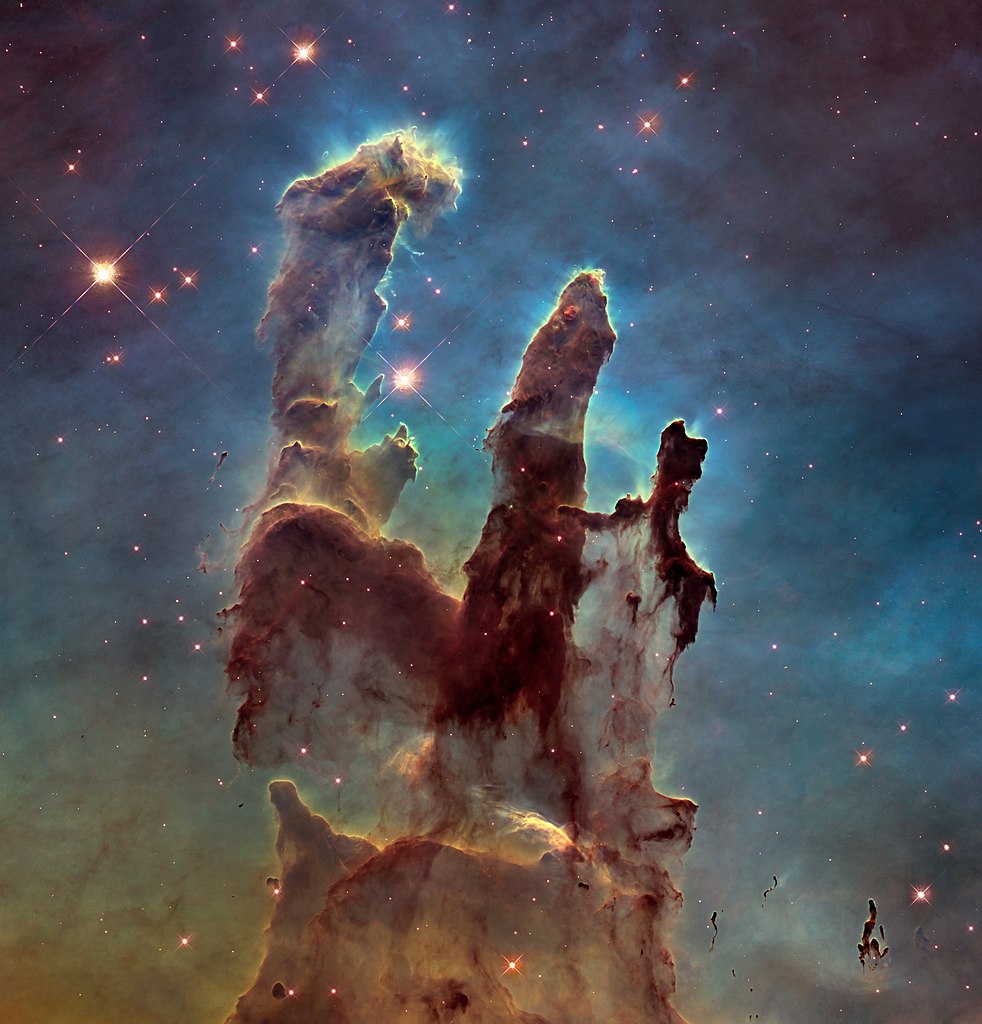
Pillars of Creation by Hubble in 2014 - Image credit: NASA, ESA, and the Hubble Heritage Team (STScI/AURA)
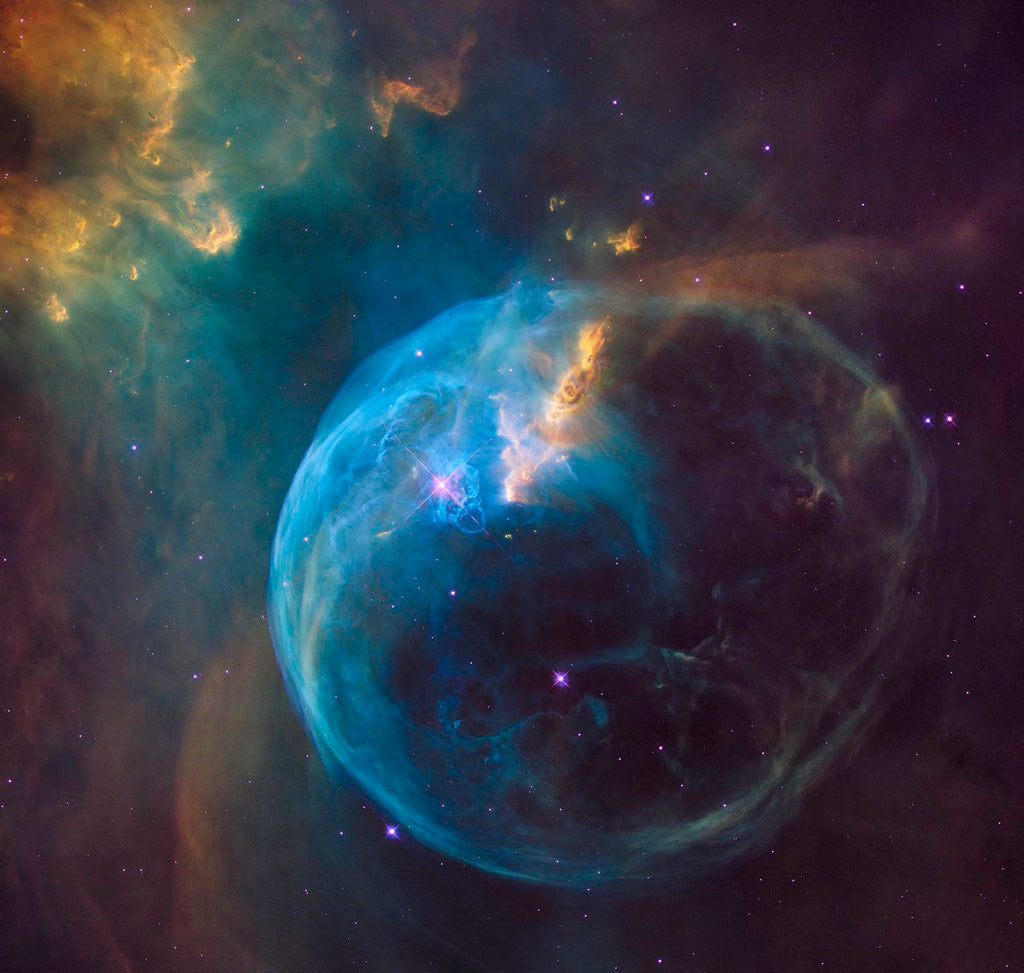
The Bubble Nebula - Image credit: NASA, ESA, Hubble Heritage Team

Horsehead Nebula - Image credit: NASA, ESA, and the Hubble Heritage Team
